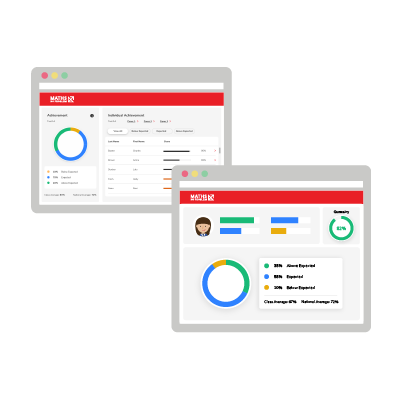Ask yourself: what is the purpose of assessment in the classroom?
You’re halfway through the school year, with a wealth of data at your fingertips. Now, how can you ensure that assessment in the classroom has purpose and will help your learners progress?
Think about the assessment data you’ve gathered up to this point. Your formative assessment includes daily questioning, observations of the children’s learning, marking of journals and workbooks and talking directly to each learner. While your summative data comes from end-of-chapter reviews and the wider-scoped assessment booklets.
Whether you are using an online assessment tracker like Insights, a colour-coded spreadsheet or an old-school pen and paper approach — you have a range of assessment data at your fingertips.
But what comes after initial assessment?
Your assessment checklist: Assess, Diagnose, Action
At Nahda Academy, there are layers to the assessment data we’ve collected over the first semester, and these layers need to be analysed and interpreted in detail at the individual, class and whole-school level. We’ve found that the framework: Assess, Diagnose, Action, supports assessment across the board and reduces the opportunity for error.
Summative assessment can be a powerful tool when interpreted and used to inform our future planning. Too often, data is submitted and forgotten about. Once we’ve assessed our learners, it’s important to move onto the next two steps of the process to ensure that assessment in the classroom has purpose.
By analysing the different content domains at these levels, we gain insight into how our learners have performed and achieved in these key areas. In turn, this informs our action plan for daily teaching, whole-school focus and professional development.
Assess, Diagnose, Action: individual learners
Step 1: Assess individual learners
At the halfway point of the school year, you should already have assessment data for the first term. This is the first step in the Assess, Diagnose, Action framework. If you’re not sure what effective assessment data looks like, Headteacher Dawn Copping has some ideas.
Step 2: Diagnose individual learners
- Pay attention to the types of questions the learner got incorrect
- Look at what might have impacted achievement: poor attendance, external barriers such as reading or writing, misconceptions
- Consider whether the learner’s performance is indicative of how they are learning in the classroom
Step 3: Action for individual learners
- Learning interventions provide support to learners who are struggling with a concept or who need to develop their fluency
- Pastoral care lets you take the necessary steps to ensure your learners are ready to learn
- Combine the information you have from your summative data with your daily formative assessment to understand how each learner performs under different settings
Assess, Diagnose, Action: whole-class learning
Step 1: Assess whole-class learning
You’ve assessed your class in the first teaching term so you’re ready to move on to the next step of the framework. Does your assessment experience match up with these maths mastery practitioners?
Step 2: Diagnose whole-class learning
- Consider whether the data aligns with what you are seeing day to day
- Look for anomalies: is this how you expected your learners to perform, or are there any surprises?
- Highlight any areas of weakness that are common across the class: fluency, problem solving or reasoning
Step 3: Action for whole-class learning
- Incorporate whole-class starters into lessons to work on key skills such as number bonds or times tables
- Focus on journaling and make sure your learners have plenty of exposure to the five different types to develop their reasoning
- Teach problem-solving skills and develop resilience
- Give your learners plenty of opportunities to grapple with non-routine problems
Assess, Diagnose, Action: whole-school learning
Step 1: Assess
For primary teachers who are thinking about using the Maths — No Problem! Programme, here’s how you can get the most out of classroom assessment. Once you have the assessment completed, it’s time to diagnose.
Step 2: Diagnose
- Identify areas of strength and areas for development across all year groups
- Look for trends with key content, like fractions or number operations
- Identify areas for professional development such as reasoning or problem solving
Step 3: Take Action
- Direct teachers to online professional development available on the Maths — No Problem! Academy
- Facilitate collaboration and team teaching to support teachers with the delivery of a particular concept
- Offer insights into learning by running staff workshops where the teachers become the students
We spend a huge amount of time and energy on assessment, both formative and summative. This assessment has the potential to build a very clear picture of how children perform, how our teachers perform and how our school priorities align with our learner needs.
This in-depth look into how our learners are achieving is a golden opportunity to celebrate the progress being made and adjust our course accordingly.
By linking all of the assessment data we have collected so far this year, we’ve ensured our staff will continue to develop and our children will continue to learn. If we focus on the diagnosis of this assessment and put this into purposeful action, then we will be ensuring our learners are given every opportunity to succeed.
Transform your maths assessment
Insights — our online assessment tool — gives you instant, powerful data to identify gaps and improve results.

